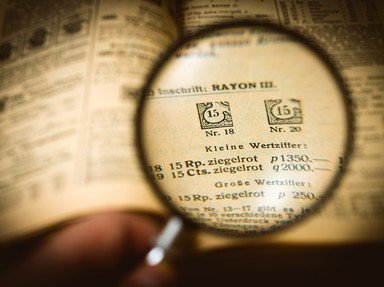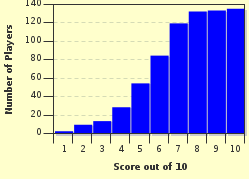Quiz Answer Key and Fun Facts
1. You enter the dead man's office, the scene of the murder. The first thing to do is determine the identity of the victim. Searching through his pockets, you find his calling card with the name: Edwin Drood. "That name seems familiar," you say. What author is the creator of the unfortunate Mr. Drood?
2. Now you should learn how Drood died. On a nearby table is an unfinished cup of tea. You notice that this tea doesn't smell quite right; it smells like bitter almonds. You're no toxicologist, but you think you know what's wrong here. What poison is most likely in the tea?
3. The police coroner confirms your suspicion. Drood was poisoned. Now would be a good time to examine the crime scene. The most obvious clue is the word 'Rache' written in blood on the wall. What does this word mean?
4. Scanning the room, you see that there is some loose soil on Drood's desk. Where did this come from, you wonder? You follow the trail of dirt until it ends at the door. There on the floor is a label that reads: 'Hybrid Coelogyne Pandurata'. What is a coelogyne pandurata?
5. One more clue is found in the ashes of Drood's office fireplace - a lady's gold ring, with gemstones set in a delicate rose pattern. You recognize the gems as being the birthstones of July and April. What gems are these?
6. The first suspect is a sloppy-looking man with an impressive nose. He introduces himself as Saul Panzer, part-time assistant to detective Nero Wolfe. He offers you his professional advice: "If you're going to make it as a detective, remember to get some hard evidence before you accuse anyone." What is evidence?
7. Your next suspect is a strikingly beautiful woman, dressed in a Victorian-style gown. "My name is Irene Adler." she tells you. "I appeared in Sir Arthur Conan Doyle's 'A Scandal in Bohemia'". She asks you: "Detective, is it possible that the clues could be red herrings?"
What kind of animal is a red herring?
8. Suspect number three says, "My name is John Jasper. I am from Edgar Allan Poe's 'The Murders in the Rue Morgue.' Inspector, I found this handkerchief in the hall wastebasket. Could it be the murderer's?" You see it is embroidered with the initials of the man known as 'The Wizard of Menlo Park.' What initials are these?
9. The final suspect introduces himself as Antonio Foscarelli, from Agatha Christie's 'Murder on the Orient Express'. "I wish I could help you.", he says. "But I am not a detective. I met one once, though! Yes, he told me his little gray cells helped him to solve mysteries." What do the little gray cells in your body do?
10. After questioning all the suspects, you realize that one of them has lied about his or her identity. You stand in the middle of the room and declare: "One of you is not who you claim to be." Each of the suspects are breathless with suspense. You make the accusation: "The murderer is - " Who is the murderer? Is it Saul Panzer, Irene Adler, John Jasper, or Antonio Foscarelli?
Source: Author
comitis
This quiz was reviewed by FunTrivia editor
Nannanut before going online.
Any errors found in FunTrivia content are routinely corrected through our feedback system.

